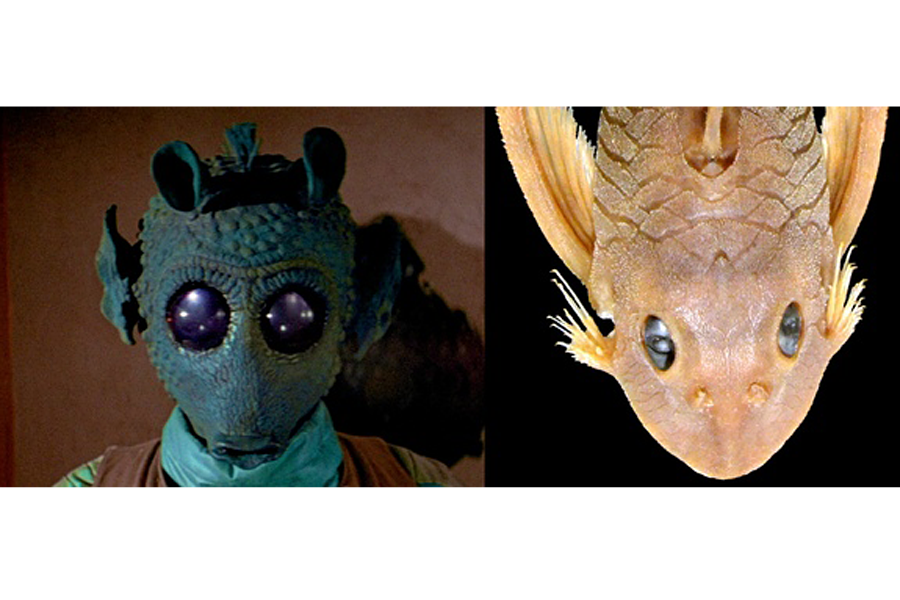New catfish species named after Greedo from 'Star Wars'
Loading...
A catfish with bulging eyes has been named after Greedo, the cute "Star Wars" character with similar bulbous eyes, a tapirlike snout and funky-green skin.
Researchers discovered the armored catfish with a sucker mouth, now called Peckoltia greedoi, along Brazil's Gurupi River in 1998. Its dark eyes, sucker mouth and facial bristles give the fish its sci-fi look, which led to its name.
Jonathan Armbruster, biological sciences professor and curator of fishes at the Auburn University Museum of Natural History, realized Greedo was a fitting name after he and colleagues were examining a specimen of the species that was collected in 2005.
One of his colleagues in the department of biological sciences, Chris Hamilton, "looked at the specimen and said, 'that looks like that guy from "Star Wars,'" Armbruster said in a statement. "After a little prodding, I realized he was talking about Greedo. We then knew what the name had to be. The Peckoltia greedoi does bear a striking resemblance to Greedo."
The armored catfish will not meet the same fate as its namesake — a bounty hunter who was killed in the series by Hans Solo — but rather will become one of several newfound organisms named after celebrities and characters.
This cast of characters includes a divalike horse fly with a golden rear end named after the pop star Beyoncé, or Scaptia (Plinthina) beyonceae; an extinct arthropod named Kootenichela deppi after Johnny Depp, due to the creature's pinchers, which resembled those of Edward Scissorhands, played by Depp in the 1990 Tim Burton film; a reddish-purple acorn worm with large lips on either side of its head named after the "Star Wars" character Yoda; and a marsh rabbit (Sylvilagus palustris hefneri) named after adult magazine publisher and playboy Hugh Hefner.
Even so, this is the first screen character Armbruster has used in a species name, though he has honored friends and colleagues, including a former student, in the past with namesake fish.
"As a 7-year-old kid, I watched 'Star Wars' in the theater and it was a life-changing experience for me," Armbruster said in the statement. "I became a lifelong fan, and I now share that with my son. Greedo has always been a personal favorite of mine."
Follow Jeanna Bryner on Twitter and Google+. Follow us @livescience, Facebook & Google+. Original article on Live Science.
- StarStruck: Species Named After Celebrities
- Photos: The Freakiest-Looking Fish
- The 12 Weirdest Animal Discoveries
Copyright 2015 LiveScience, a Purch company. All rights reserved. This material may not be published, broadcast, rewritten or redistributed.







